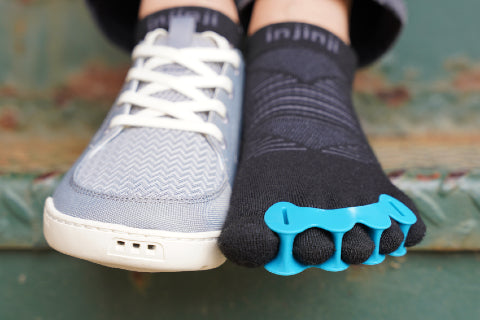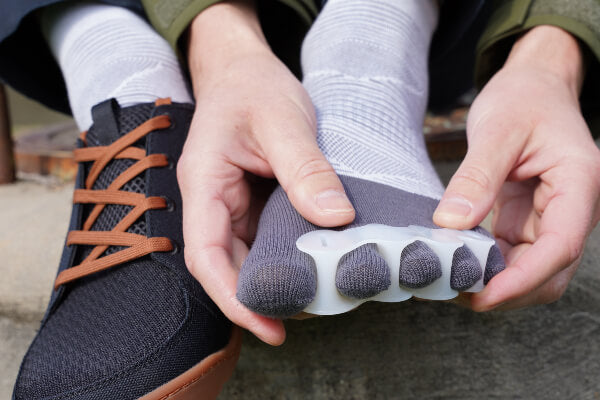
Definition
Peripheral Arterial Disease: A circulatory condition in which narrowed arteries reduce blood flow to the extremities.
General Info
Peripheral arterial disease, or PAD, is a health problem in which plaque—a combination of calcium, fibrous tissue, fat, and cholesterol—accumulates in the arteries that deliver blood to the head, organs, and limbs. Plaque can harden the arteries over time and decrease the diameter of the blood vessels, which reduces the amount of blood reaching certain parts of the body, including the feet. PAD is a common circulatory problem—it affects more than 8 million American adults—and may indicate more widespread plaque accumulation throughout the body’s blood vessels.
Decreased blood flow to the lower extremities can cause pain and numbness, and it can boost a person’s likelihood of developing an infection. PAD also increases the risk for heart attack, coronary heart disease, transient ischemic attacks, stroke, and gangrene, or tissue death—a problem that can lead to amputation. Smokers and diabetics have a significantly higher risk of developing PAD than nonsmokers, as do people with hypertension, or prolonged elevated blood pressure.
PAD symptoms are commonly mistaken for other health problems, and this condition often goes undiagnosed by healthcare providers.
Signs & Symptoms
The most significant symptom associated with PAD is intermittent claudication, which is pain, numbness, aching, or heaviness in the leg muscles that occurs with walking or climbing stairs. Intermittent claudication may also manifest as leg, buttock, thigh, calve, or foot cramping.
Some of the other most common signs and symptoms associated with PAD include:
- A blue tint to the skin
- Erectile dysfunction in men
- Decreased toenail and leg hair growth
- Diminished or absent pulses in the lower extremities
- Decreased temperature in one leg compared to the other
- Slow healing (or non-healing) foot and toe sores or wounds
Possible Causes
The No. 1 cause of PAD is atherosclerosis (from smoking, prolonged elevated blood sugar levels, or high blood pressure), although other problems—blood vessel inflammation, limb injury, certain anatomical abnormalities, radiation exposure—may also cause this condition.
Other relevant risk factors for this condition include:
- Obesity
- Advanced age
- A family history of this condition
- High levels of a protein called homocysteine
Helpful Strategies
PAD is a health condition that should always be managed by a healthcare professional. Some people with this condition may require prescription medication and/or surgery (bypass grafting, angioplasty, etc.), but most people with PAD will benefit from lifestyle changes, including quitting smoking, reducing blood pressure, maintaining healthy blood sugar levels, and boosting physical activity levels.
Consuming a healthy diet is another critical part of any treatment plan that attempts to manage PAD symptoms. Increasing the intake of fruits and vegetables and minimizing or eliminating trans fat from the diet is a good place to start.

WANT TO IMPROVE YOUR FOOT HEALTH?
Let the team at Natural Footgear help you! Subscribe to our newsletter for the latest offers and helpful info, and sign up for our FREE email courses on various topics and foot health conditions.
Sign Up →
Want to Improve Your Foot Health?
We are here to help you every step of the way. Get our newsletter for the latest offers and helpful info, and sign up for our FREE email courses on various topics and conditions, including bunions, hammertoes, neuromas, plantar fasciosis, shin splints, ingrown toenails, and more.
Sign Up →
 The human circulatory system is made up of a pump (the heart) and a delivery system (the blood vessels) for transporting blood throughout the body. The two types of circulation in the body are called systemic circulation and pulmonary circulation. Systemic circulation is responsible for bringing fresh, oxygen-rich blood to all the body’s tissues and organs, while pulmonary circulation is responsible for carrying oxygen-depleted blood from the heart to the...
Read more
The human circulatory system is made up of a pump (the heart) and a delivery system (the blood vessels) for transporting blood throughout the body. The two types of circulation in the body are called systemic circulation and pulmonary circulation. Systemic circulation is responsible for bringing fresh, oxygen-rich blood to all the body’s tissues and organs, while pulmonary circulation is responsible for carrying oxygen-depleted blood from the heart to the...
Read more





